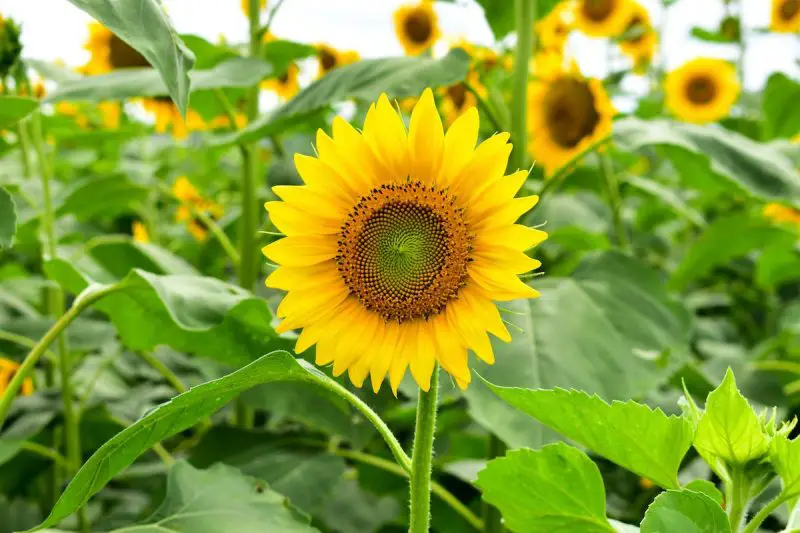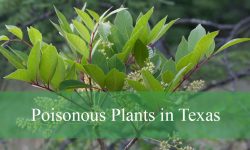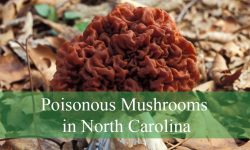Sunflowers are one of the most iconic and beloved garden flowers in Kansas. Their bright yellow petals and towering stalks symbolize summer and bring warmth to any outdoor space. Many gardeners in Kansas enjoy growing sunflowers not only for their beauty but also for the edible seeds they produce, which attract birds and wildlife.
Growing sunflowers from seed is both satisfying and relatively easy, especially when you understand the unique climate and soil conditions of Kansas. The state experiences hot summers and cold winters, with a wide range of soil types that can impact sunflower growth. Careful attention to planting timing and site preparation ensures the best results.
In this guide, we will explore how to choose the right sunflower varieties for Kansas, prepare your soil properly, and care for your sunflowers through every stage—from seed to full bloom. These tips will help you achieve stunning sunflower gardens year after year.
Understanding Kansas Climate and Its Impact on Sunflower Growth

Kansas experiences a continental climate characterized by hot summers, cold winters, and moderate rainfall. The state falls mostly within USDA Hardiness Zones 5b to 7a, which means sunflowers can be grown successfully as annuals each year. The long, sunny days in summer are perfect for sunflowers, as they require full sun exposure for at least six to eight hours daily.
However, Kansas weather can be unpredictable with occasional late spring frosts or sudden dry spells during the growing season. Therefore, timing your planting and monitoring soil moisture is crucial to maximizing sunflower growth. Being aware of local frost dates and soil temperatures will help you avoid common pitfalls.
Choosing the Right Sunflower Varieties for Kansas Gardens
There are many varieties of sunflowers, ranging from dwarf types suitable for small spaces to giant cultivars that can reach heights over ten feet. In Kansas, choosing the right sunflower variety depends on your garden space, soil type, and what you want from the plants — whether it’s ornamental value, seed production, or attracting pollinators.
Popular large varieties such as ‘Mammoth’ or ‘Giant Sungold’ perform well in Kansas’s rich soils and ample sunlight. These produce large flowers and abundant seeds. For smaller spaces or container gardens, varieties like ‘Teddy Bear’ or ‘Sunspot’ offer compact growth and continuous blooming.
Selecting disease-resistant and drought-tolerant cultivars is advisable given Kansas’s occasional dry periods and potential for fungal diseases in humid conditions. Local garden centers or extension offices often provide region-specific recommendations for sunflower seeds.
Preparing the Soil for Sunflower Planting in Kansas
Sunflowers thrive best in well-drained soil with a neutral to slightly acidic pH between 6.0 and 7.5. Kansas soils vary widely, including sandy loam in western regions and heavier clay soils in the east. Regardless of your soil type, preparing the planting area properly enhances germination and healthy growth.
Before planting, till or loosen the soil to a depth of 12 inches to encourage strong root development. Adding organic matter such as compost improves soil fertility and moisture retention, which is particularly helpful in drier areas of Kansas. Avoid overly rich soils as excessive nitrogen can encourage leafy growth at the expense of flowers.
Testing soil pH can be done with kits available at garden centers, and amendments such as lime or sulfur can adjust pH levels if necessary. Good drainage is essential, so if your soil is prone to waterlogging, consider raised beds or planting on slight mounds.
When to Plant Sunflower Seeds in Kansas
Timing is critical for sunflower success in Kansas. The best planting time is after the last spring frost when soil temperatures consistently reach 50 to 60 degrees Fahrenheit. This generally means mid to late April in southern Kansas and early to mid-May in northern parts.
Planting too early can expose seeds to cold, wet soil that inhibits germination and promotes rot. On the other hand, planting too late shortens the growing season, which may result in smaller plants or fewer blooms before the first fall frost.
Observing your local frost dates, available through Kansas State University extension or weather services, helps pinpoint the optimal sowing window. If you want a longer flowering period, you can also practice succession planting by sowing seeds every two to three weeks until midsummer.
How to Plant Sunflower Seeds for Maximum Germination
Planting sunflower seeds properly ensures the best chances for strong seedlings. In Kansas gardens, sow seeds directly into the prepared soil rather than starting indoors, as sunflowers dislike root disturbance.
Plant each seed about 1 to 1.5 inches deep with spacing of 6 to 12 inches depending on the variety. Larger varieties need more space to develop tall, sturdy stems, while dwarf types can be closer. Firm the soil gently over the seeds and water thoroughly but avoid waterlogging.
In sandy or dry soils typical of western Kansas, applying mulch after planting helps retain soil moisture and moderates temperature fluctuations. Make sure the soil stays moist until seeds sprout, which usually takes 7 to 10 days.
Caring for Sunflowers During Growth in Kansas
Once seedlings emerge, they require consistent care to reach their full potential. Watering is crucial during dry spells, especially when buds form and flowers begin to open. Kansas’s summer heat can stress plants, so aim to keep soil moist but not saturated.
Sunflowers are generally hardy and resistant to pests, but monitoring for common problems like aphids, caterpillars, or fungal diseases will prevent damage. Using natural predators or insecticidal soaps can control pests without harming pollinators.
Fertilizing with a balanced, slow-release fertilizer can support robust growth, but avoid over-fertilizing which can cause weak stems. Supporting tall varieties with stakes or planting in sheltered locations helps prevent wind damage common in open Kansas landscapes.
Pollination and Attracting Beneficial Wildlife
Sunflowers are excellent at attracting bees, butterflies, and birds, which are vital for pollination and the overall health of your garden. Encouraging these beneficial insects supports not only sunflower blooms but other plants nearby.
Planting sunflowers near other pollinator-friendly flowers or maintaining natural habitats around your garden promotes biodiversity. Avoid broad-spectrum pesticides to protect these helpful creatures.
Once pollinated, sunflowers develop large seed heads that mature through late summer. Leaving some seed heads intact supports local wildlife such as finches and squirrels, which relish sunflower seeds.
Harvesting Sunflower Seeds in Kansas
If you are growing sunflowers for their seeds, timing the harvest correctly ensures the best yield and quality. Seeds are ready when the back of the flower head turns brown, and the seeds look plump and hard.
In Kansas, this usually happens in late summer or early fall, depending on planting time and variety. Cut the entire flower head with a few inches of stalk attached, and hang it upside down in a dry, well-ventilated area.
Once seeds dry, remove them by rubbing the flower head gently. Clean and store seeds in airtight containers to prevent mold. You can use seeds for roasting, birdfeeders, or saving for next year’s planting.
Dealing with Common Challenges Growing Sunflowers in Kansas
Despite their hardy nature, sunflowers in Kansas may face challenges including drought, wind damage, pests, and diseases. The state’s variable weather means gardeners must be proactive.
To combat drought, use mulch and deep watering techniques. Plant sunflowers in sheltered areas or use supports to prevent stems from breaking in windstorms. Watch for pests such as sunflower moths or caterpillars and treat early.
Fungal diseases like powdery mildew or rust can occur if plants remain damp for long periods. Ensuring good air circulation and avoiding overhead watering minimizes these risks. Selecting disease-resistant varieties also helps.
FAQ About How to Grow Sunflowers from Seed in Kansas
When is the best time to plant sunflower seeds in Kansas?
The ideal time to plant sunflower seeds in Kansas is after the last frost date when soil temperatures reach around 50 to 60°F. This usually falls between mid-April and early May in southern Kansas, and late April to mid-May in northern areas. Planting within this window ensures good germination and healthy seedling growth.
What soil conditions do sunflowers prefer in Kansas?
Sunflowers thrive in well-drained soils with a pH between 6.0 and 7.5. Kansas soils vary widely, so it’s important to loosen the soil to at least 12 inches deep and amend it with organic matter to improve fertility and moisture retention. Avoid overly wet or compacted soils, which can cause root rot.
How deep and far apart should I plant sunflower seeds?
Plant sunflower seeds about 1 to 1.5 inches deep. The spacing depends on the variety: large sunflowers need about 12 inches between plants to allow room for growth, while smaller varieties can be planted closer, around 6 to 8 inches apart.
How much sunlight do sunflowers need in Kansas?
Sunflowers require full sun, ideally 6 to 8 hours of direct sunlight daily. Kansas’s long, sunny summer days provide excellent conditions for sunflowers to grow tall and bloom abundantly.
How often should I water sunflowers in Kansas?
Sunflowers need regular watering during dry spells, especially when young seedlings are establishing and during bud formation. Deep watering once or twice a week is usually sufficient, but adjust frequency depending on rainfall and soil moisture. Avoid overwatering to prevent root diseases.
What are common pests and diseases affecting sunflowers in Kansas?
Common pests include aphids, caterpillars, and sunflower moths. Diseases such as powdery mildew, rust, and root rot can occur, especially if plants are overcrowded or watered overhead. Natural pest control methods and ensuring good air circulation help reduce problems.
Can I grow sunflowers in containers in Kansas?
Yes, dwarf sunflower varieties like ‘Teddy Bear’ and ‘Sunspot’ grow well in containers. Use large pots with well-drained soil and place them in a sunny location. Container sunflowers need regular watering and fertilizing since nutrients leach out faster than in-ground plants.
How do I harvest sunflower seeds in Kansas?
Harvest seeds when the back of the flower head turns brown and seeds appear plump and hard. Cut the head with a few inches of stalk and hang it upside down in a dry, ventilated area. Once dried, rub seeds free and store in airtight containers.
Can I extend the blooming period of sunflowers in Kansas?
Yes, by practicing succession planting—sowing seeds every two to three weeks from spring through mid-summer—you can enjoy sunflowers blooming over an extended period instead of all at once.
Conclusion: Growing Sunflowers from Seed in Kansas is Rewarding and Achievable
Growing sunflowers from seed in Kansas combines understanding the local climate with proper planting and care techniques. By selecting suitable varieties, timing your planting correctly, preparing the soil, and providing attentive care, you can enjoy spectacular sunflower blooms every year.
Whether you want towering giants or charming dwarf varieties, sunflowers brighten any garden and attract wildlife. With patience and knowledge, Kansas gardeners can cultivate these sunny flowers successfully, creating vibrant landscapes and even harvesting seeds for food or future plantings.






